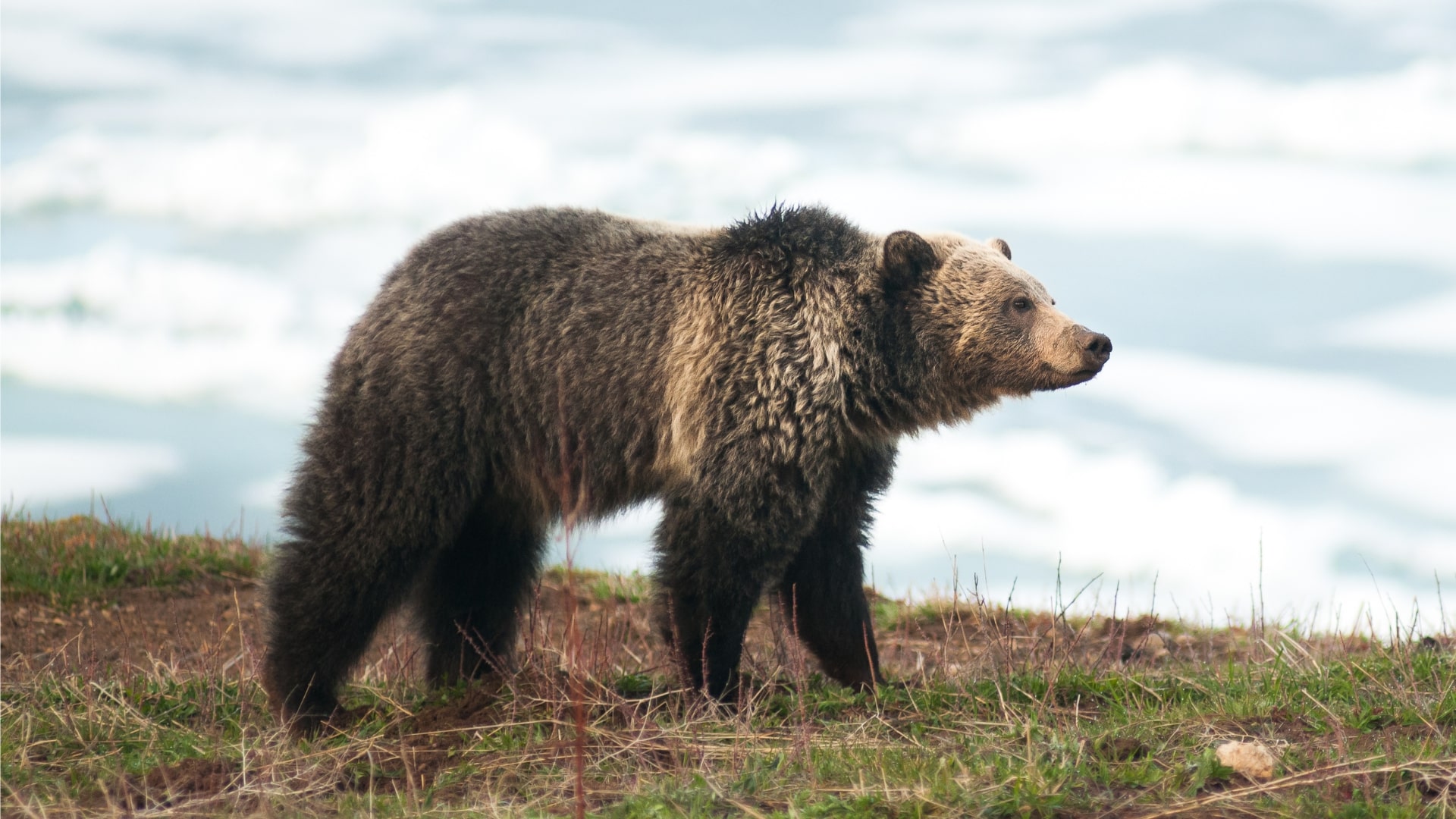Physical characteristics
The grizzly bear (Ursus arctos horribilis) is a large omnivourus mammal that can weigh up to 800 pounds and stand up to 9 feet tall on its hind legs. They have shaggy fur that can range in color from light brown to almost black, with a distinctive hump on their shoulders. Their paws are large and equipped with sharp claws for digging and climbing. Grizzlies have a keen sense of smell and good hearing, which helps them locate prey and avoid danger.
Behavior
Grizzly bears are generally solitary animals, except during breeding and when a mother is raising her cubs. They are active during the day and night, but their activity patterns are often dictated by the availability of food. Grizzly bears are excellent swimmers and climbers, and they have been known to run up to 35 miles per hour. They are also known for their impressive sense of smell, which they use to locate food, mates, and to avoid danger.

Habitat
Grizzly bears can be found in a variety of habitats, including forests, grasslands, tundra, and alpine areas. While their historic range consisted of major parts of North America, today they are most commonly found in western North America, from Alaska down to Montana. They require large areas of land with a variety of habitats to fulfill their food and shelter needs.
Diet
Grizzly bears are omnivorous, meaning they eat both plants and animals. Their diet can vary depending on the season and location, but commonly includes roots, berries, nuts, insects, small mammals, and fish. They are known for their ability to catch salmon during spawning season, using their sharp claws to scoop them out of the water.
Breeding
Grizzly bears typically mate in the spring and summer, with cubs being born in the winter while the mother is hibernating. Cubs stay with their mother for up to three years, learning important survival skills such as hunting and foraging.
Ecological role
Grizzly bears play an important role in their ecosystem as top predators. They help control populations of prey species, which can have cascading effects on the entire ecosystem. They also help to disperse seeds and nutrients by consuming fruits and other plant material.
Grizzly Bear Hunting
Grizzly bear hunting has a mixed history. Long ago, Native American groups respected and used bears for their needs. But when new people moved in, they hunted bears a lot, causing big problems. This made many bears disappear.
Later on, people realized that we need to protect grizzly bears. They help keep nature in balance. Places like national parks became safe spots for them. Nowadays, some places allow a bit of grizzly bear hunting, but it’s controlled, so the populations aren’t so scarce.
Tracks & Signs
Grizzly bear tracks are large and distinctive, with five toes and claw marks visible in the tracks. The front tracks are usually larger than the hind tracks. Hind print is usually 10-12 in. (25-30 cm) long, while fore print is 5-7 in. (13-18 cm) long.
Sometimes it can be tricky distinguishing grizzly bear tracks from those of a black bear. Grizzly bear tracks are larger with prominent claw imprints, a squared-off shape, and larger front pads, while black bear tracks are smaller, with less visible claws, a more rounded shape, and smaller front pads.
Claw marks on trees left by grizzly bears serve as both a means of sharpening their claws and, more importantly, as subtle territorial indicators within their area, allowing them to communicate with other bears through scent and visual cues.
Grizzly bear scat (feces) is usually massive and varies in appearance depending on their diet. It may contain remnants of berries, grasses, nuts, or animal remains. Fresh scat may have a moist appearance but dries out over time.
Conservation
Grizzly bears are listed as a threatened species under the Endangered Species Act. Habitat loss, hunting, and human-bear conflicts are the biggest threats to their survival. Conservation efforts include habitat protection, education about coexisting with bears, and reintroduction programs in areas where they have been extirpated.
Did You Know?
Grizzly bears have a unique shoulder hump made of muscle, which gives them immense strength for digging, climbing, and carrying heavy loads.
This hump provides them with the power and endurance necessary to dig for food, defend themselves, and navigate their rugged habitats.
They are highly intelligent animals with a keen sense of smell.
Their sense of smell is estimated to be about 2,000 times more powerful than that of humans. This exceptional olfactory ability helps them locate food sources, including berries, roots, and carrion, from miles away.
Grizzly bears are highly revered in many cultures, particularly among Native American tribes.
They are often regarded as symbols of strength, wisdom, and spiritual significance. Their presence in folklore and mythology reflects the deep respect and awe that humans have held for these magnificent creatures for centuries.
Image sources: Jess Lee Photography, Pixels, Greenbelly Meals





